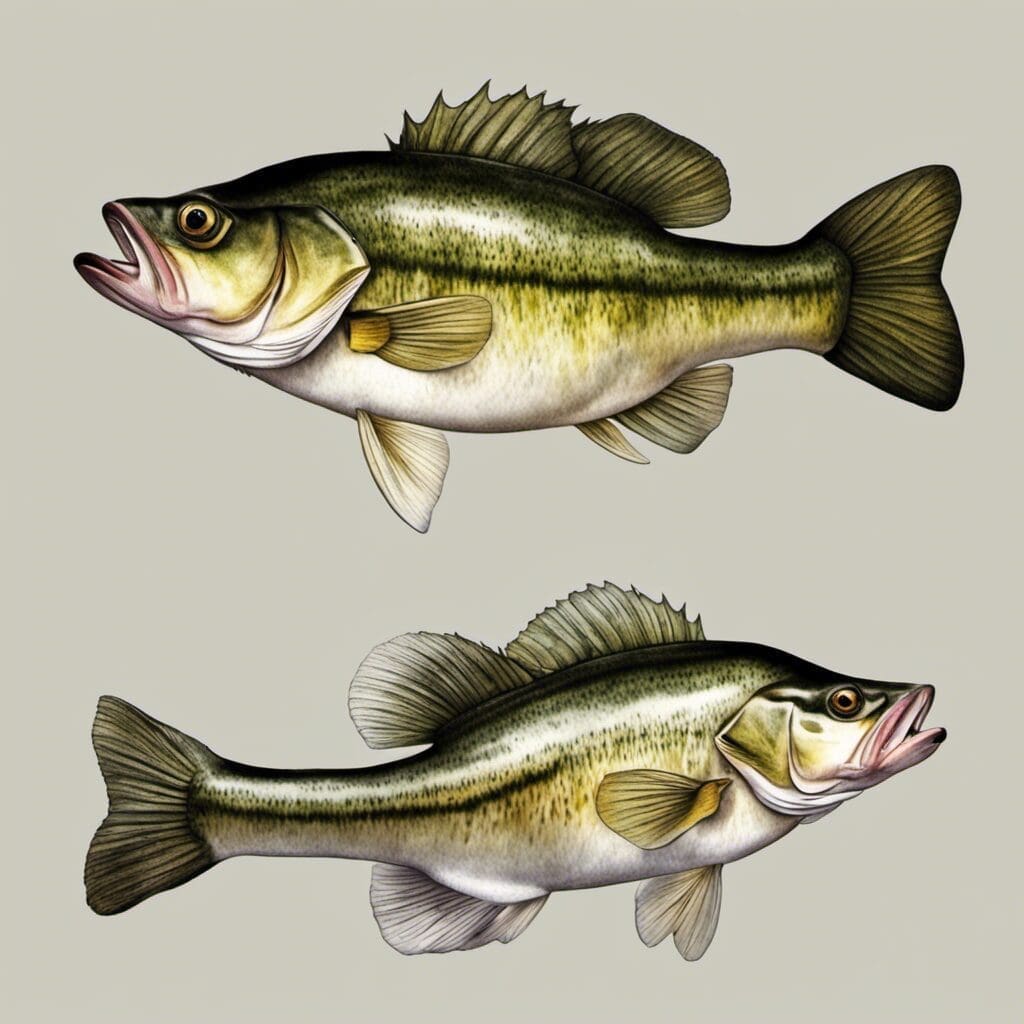Introduction
Largemouth Bass (Micropterus salmoides) is a popular fish species belonging to the Centrarchidae family, commonly known as sunfish.
Conservation Status
The current conservation status of the Largemouth Bass is “Least Concern” according to the International Union for Conservation of Nature (IUCN). Various conservation efforts have been put in place to maintain the species population, which includes regulation of fishing seasons and implementing size limitations among recreational anglers.
Statistics
| Stat | Average | Range |
|---|---|---|
| Length | 18 inches | 12-25 inches |
| Weight | 10 lbs | 1-20 lbs |
| Average Lifespan | 16 years | N/A |
Distribution
The Largemouth Bass is widely distributed across North America and has also been introduced to many other regions worldwide. They exhibit no significant migration patterns.
Habitats
Largemouth Bass pend their time in freshwater habitats including lakes, rivers, ponds, and reservoirs. They prefer water temperatures between 60 and 75 degrees Fahrenheit and tend to stay in shallow waters, usually no deeper than 20 feet.
When and Where to See
These species can be spotted during spring to summer when the water temperature is ideal. Dusk and dawn are the best times to catch them as they are usually active during these hours.
Best Fishing Locations
Some renowned locations include:
- Lake Guntersville, Alabama
- Lake Okeechobee, Florida
- Kentucky Lake, Kentucky
- Lake Fork, Texas
- Castaic Lake, California
Generally, look for quiet, warm, shallow parts of freshwater habitats, especially with vegetative cover.
How to Catch
Best lures include spinnerbaits, plastic worms, and crankbaits, Bait selection should be influenced by the bass’s natural prey in its habitat. As for the technique, casting and reeling are often used. Early morning and late evening in spring to summer months make for the best fishing times.
Identification Guide
Largemouth Bass are olive green to gray in color, with a series of dark, sometimes black blotches forming a jagged stripe along each flank. Their upper jaw reaches beyond the back margin of the eye, differentiating them from smallmouth bass.
Culinary
Bass meat is white, firm, and flaky with a mild taste. It’s packed with protein and low in fat. One popular dish is blackened bass, a cajun recipe that highlights its firm texture.
Additional Information
Largemouth Bass are aggressive feeders feeding on a range of prey including insects, crustaceans, frogs, and smaller fish. Humans and larger fish species are their main threats. Their feisty, fight-back nature have made them a Sportfish icon in the US.
References and Further Reading
For more information, check out these resources:

